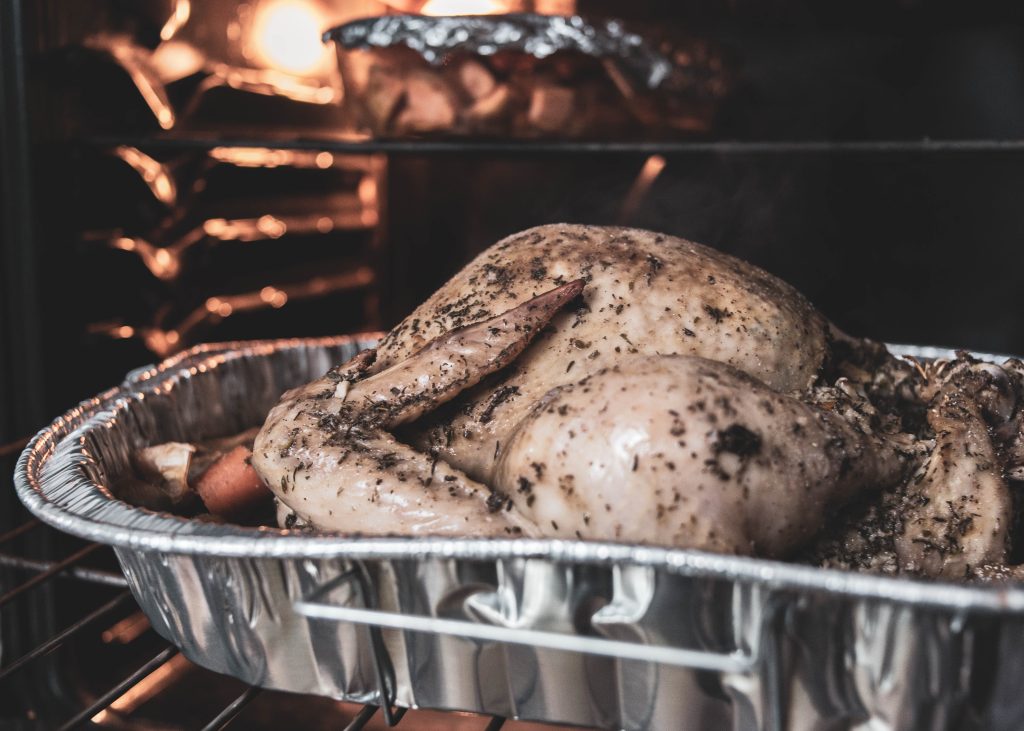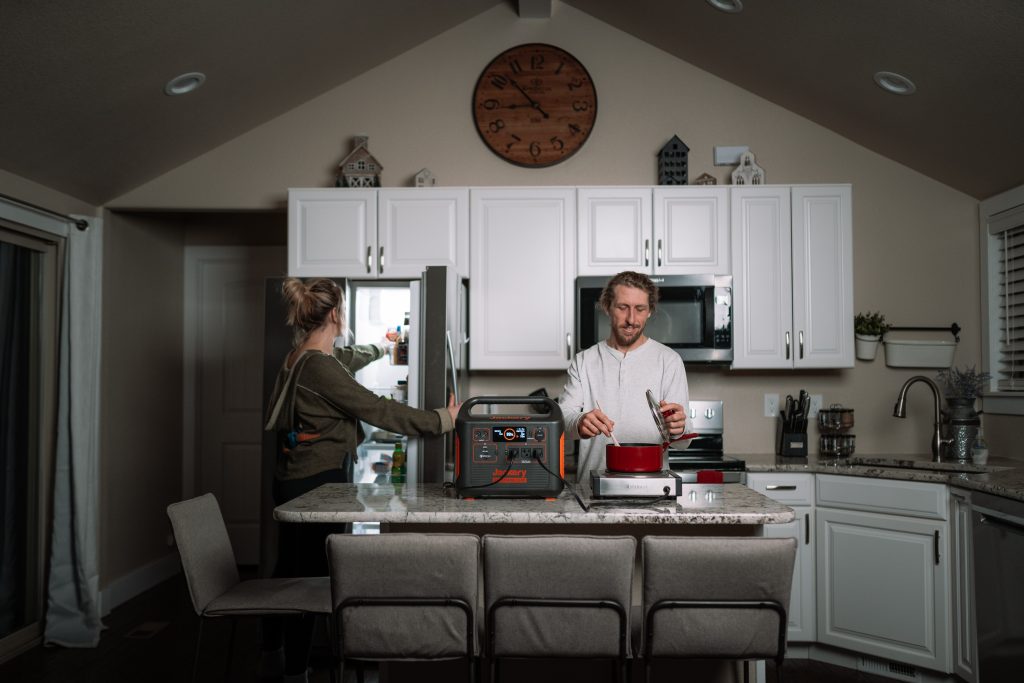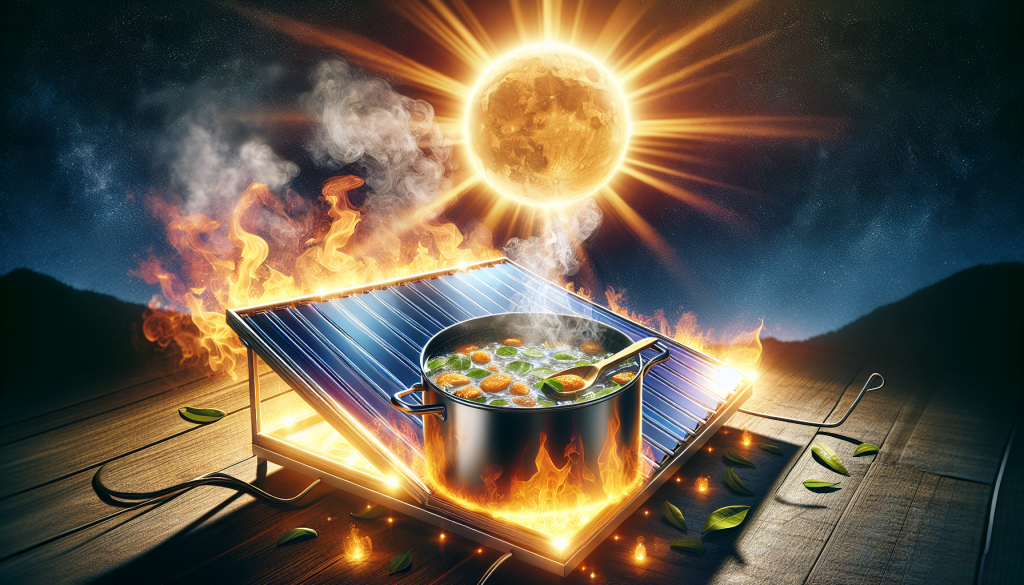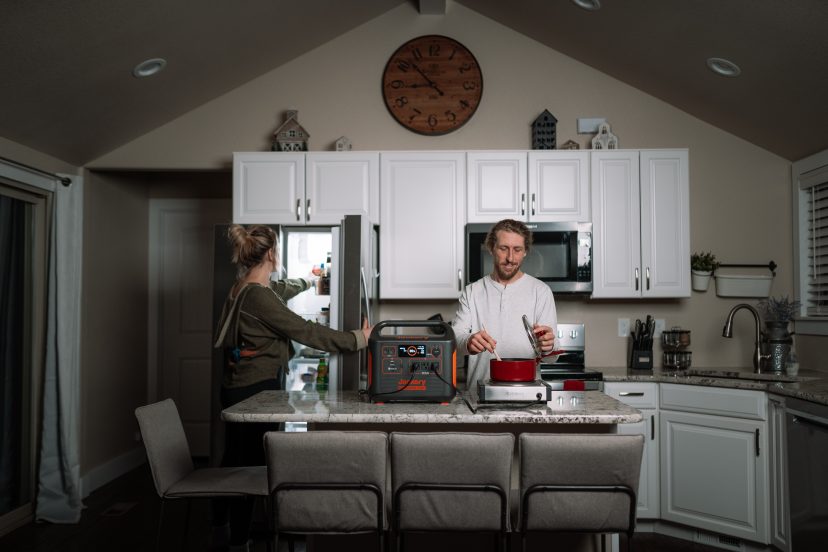How Does A Solar Oven Work
As an Amazon Associate, I earn from qualifying purchases, at no additional cost to you. Disclaimer
I have always been fascinated by the power of the sun, and discovering how it can be harnessed to create something as practical as a solar oven has been truly eye-opening. Harnessing the sun’s rays to create heat for cooking seems almost too good to be true, but the simplicity and ingenuity behind how a solar oven works is truly remarkable. By utilizing the greenhouse effect and carefully designed reflective surfaces, a solar oven has the ability to cook food using nothing but the energy from the sun. Let me walk you through the incredible process of how a solar oven works.

Understanding the Basic Principle of a Solar Oven
Concept of the greenhouse effect in Solar Ovens
A solar oven works on the principle of the greenhouse effect. Just as a greenhouse traps the sun’s heat to keep the interior warm, a solar oven uses the same concept to cook food. The oven is designed to capture and retain the sun’s energy, creating a warm and enclosed space for cooking.
Role of sunlight in powering Solar Ovens
The main source of power for a solar oven is sunlight. The oven utilizes the sun’s rays to heat up the interior, thereby allowing the cooking process to take place. The oven’s design maximizes the capture of sunlight and its conversion into heat energy.
Meaning of solar cooking
Solar cooking refers to the process of using the sun’s energy to cook food without the need for traditional fuel sources such as gas, electricity, or wood. By harnessing the power of sunlight, solar ovens provide a sustainable and environmentally friendly solution for cooking.
The Design and Construction of a Solar Oven
Significance of Insulation in Solar ovens
Insulation plays a crucial role in the design of solar ovens. It helps to minimize heat loss and maintain a consistent temperature inside the oven. By using materials with high insulating properties, solar ovens are able to retain the heat generated by the sun, enabling efficient cooking.
Use of reflective surfaces in design
Reflective surfaces are essential components of solar ovens. They are strategically placed to maximize the capture of sunlight and redirect it towards the cooking chamber. Reflective surfaces, such as mirrors or aluminum foil, help to concentrate the sun’s rays and intensify the heating effect, making solar ovens more effective.
Choice of construction materials used in Solar Ovens
When it comes to construction materials, solar ovens often incorporate materials with high heat absorption and retention capabilities. Common choices include black metal or dark-colored materials that absorb sunlight effectively. The use of transparent materials for the oven’s cover allows sunlight to enter while minimizing heat loss.
Operational Procedure of a Solar Oven
Understanding the alignment of the Solar Oven with the sun
Proper alignment with the sun is crucial for the efficient functioning of a solar oven. The oven should be positioned in a way that allows maximum exposure to the sun’s rays. It is important to adjust the oven’s position throughout the day to ensure optimal sunlight capture.
How to operate the Solar Oven efficiently
To operate a solar oven efficiently, it is essential to preheat the oven by aligning it with the sun before placing the food inside. It is also important to choose the right size and type of cookware suitable for solar cooking. Regularly checking the oven’s alignment and refocusing the reflective surfaces ensures consistent heat absorption.
Temperature regulation in Solar Ovens
Solar ovens do not have manual temperature controls like conventional ovens. However, temperature regulation can be achieved by adjusting the angle of the oven in relation to the sun and by using insulating materials to maintain a steady temperature. Monitoring the cooking process and making necessary adjustments is key to achieving the desired temperature for cooking.
Types of Solar Ovens
Details on Box Solar Cookers
Box solar cookers are the most commonly used type of solar oven. They consist of an insulated box with a transparent lid and reflective surfaces, designed to trap and retain heat. Box solar cookers are versatile and can be used for baking, boiling, and slow cooking various types of food.
Information on Panel Solar Cookers
Panel solar cookers are lightweight and portable, making them ideal for outdoor activities such as camping or picnics. They consist of reflective panels that fold and focus sunlight onto a cooking pot or tray. Panel solar cookers are effective for low-temperature cooking, such as steaming or warming food.
Insights on Parabolic Solar Cookers
Parabolic solar cookers use a parabolic-shaped reflector to concentrate sunlight onto a focal point, where the cooking vessel is placed. This type of solar oven can achieve high temperatures quickly and is ideal for frying or stir frying. However, parabolic solar cookers require careful handling due to their concentrated heat and glare.
Understanding Hybrid Solar Cookers
Hybrid solar cookers combine different technologies, such as solar and electric power or solar and biomass, to provide cooking options even when sunlight is limited. These cookers offer versatility and flexibility, allowing users to cook using alternative energy sources when needed.

Understanding the Benefits of Solar Ovens
Environmental relevance of Solar Ovens
Solar ovens have a significant positive impact on the environment. By utilizing the sun’s energy, they eliminate the need for traditional fuel sources, reducing greenhouse gas emissions and air pollution. Solar ovens promote sustainable living and contribute to the preservation of natural resources.
Affordability of Solar Cooking
Solar cooking is an affordable alternative to conventional cooking methods. Solar ovens require minimal or no fuel costs, as they solely rely on sunlight. This makes solar cooking accessible to communities with limited resources, promoting economic empowerment and reducing dependency on expensive cooking fuels.
Health and safety benefits of Solar Ovens
Solar ovens promote healthier cooking practices. Unlike traditional cooking methods that produce smoke and indoor air pollution, solar ovens operate without emissions, resulting in improved indoor air quality and reduced health risks. Additionally, solar ovens eliminate the risk of fire hazards associated with open flames or gas stoves.
Limitations and Drawbacks of Solar Ovens
Issues with Solar Ovens’ dependency on weather
One limitation of solar ovens is their dependency on weather conditions. Cloudy or rainy days can significantly reduce their efficiency and cooking performance. Lack of sunlight or inconsistent weather patterns can make it challenging to rely solely on solar ovens for cooking in certain regions.
Speed and cooking time limitations in Solar Ovens
Solar ovens generally have a slower cooking time compared to conventional ovens. This is due to the lower temperatures they achieve and the reliance on sunlight for heating. Cooking times may vary depending on the type of food and weather conditions, requiring more planning and patience when using solar ovens.
Cultural and social acceptability challenges of Solar Ovens
Introducing solar ovens to certain communities may face cultural and social challenges. People’s cooking habits and preferences may differ, and willingness to adopt new cooking technologies can vary. Educating and raising awareness about the benefits and advantages of solar ovens are essential to overcome these barriers.

Safety Tips While Using Solar Ovens
How to handle the high temperatures
Solar ovens can reach high temperatures, and precautions should be taken when handling them. It is recommended to wear oven mitts or heat-resistant gloves when adjusting or removing hot cookware from the solar oven. Avoid touching the oven’s interior or reflective surfaces while it is in use or immediately after cooking.
Avoiding harmful glares
The concentrated sunlight in solar ovens can create glares that can be harmful to the eyes. It is important to avoid looking directly at the oven’s reflective surfaces, especially when the sun is high or at its peak. Using sunglasses or positioning the oven to minimize glares can help ensure eye safety during solar cooking.
Safe food handling in Solar Ovens
Practicing safe food handling is crucial when using solar ovens. It is important to ensure that food is adequately cooked to safe internal temperatures to prevent foodborne illnesses. Using a food thermometer, following proper cooking times, and maintaining cleanliness and hygiene while handling food are essential for safe solar cooking.
Maintaining and Cleaning Solar Ovens
Routine maintenance checks
Regular maintenance of solar ovens helps ensure their optimal performance. This includes checking the integrity of the reflective surfaces, inspecting for any damage or wear, and cleaning the oven’s interior and exterior components. Routine checks also include verifying the alignment of the oven with the sun to maintain its efficiency.
Cleaning procedure tips
Cleaning solar ovens is a straightforward process. The interior can be wiped clean with a damp cloth, removing any food residue or debris. The reflective surfaces may be cleaned gently with a soft cloth or sponge. It is important to avoid using abrasive cleaners or harsh chemicals that could damage the oven’s components.
Common repair issues and how to solve them
Common repair issues with solar ovens include damage to the reflective surfaces or the insulation. If the reflective surfaces are scratched or deteriorated, they can be replaced with new reflective material. In the case of insulation damage, adding or replacing insulation material can help restore the oven’s heat retention properties.

Economic and Social Impact of Solar Ovens
Reducing energy costs with Solar Ovens
Solar ovens have a significant impact on reducing energy costs. By minimizing or eliminating the need for traditional cooking fuels, solar ovens can result in substantial savings over time. This has a positive economic impact, especially for communities that rely heavily on expensive fuels for cooking.
Promotion of gender equality through Solar Cooking
In many societies, women and girls are primarily responsible for cooking in households. Solar cooking can alleviate the burden of collecting firewood or purchasing cooking fuels, often falling on the shoulders of women. Solar ovens provide an opportunity for gender equality by reducing time and effort spent on fuel gathering, enabling women to engage in other activities such as education and income generation.
Solar Ovens’ contribution to combating climate change
The use of solar ovens helps reduce greenhouse gas emissions, contributing to the global effort to combat climate change. By replacing fossil fuel-based cooking methods, solar ovens minimize carbon dioxide and other harmful emissions. This sustainable cooking solution aligns with the goals of reducing reliance on non-renewable resources and achieving a greener future.
Future of Solar Oven Technology
Emerging trends in Solar Oven design and technology
The future of solar oven technology looks promising, with ongoing innovations and improvements. There is a growing interest in developing more efficient reflector designs, advanced heat storage systems, and integrated temperature controls. The incorporation of smart technology, such as automated sun tracking and remote monitoring, is also being explored.
Potential impact of technological advancements on Solar Ovens
Technological advancements have the potential to enhance the performance and usability of solar ovens. Improved reflector designs could increase the concentration of sunlight, allowing for higher cooking temperatures and reduced cooking times. Advanced heat storage systems could provide more consistent heat, enabling cooking even during suboptimal weather conditions.
Role of research and development in Solar Cooking
Continued research and development play a vital role in advancing solar cooking technologies. Collaborations between experts in various fields can lead to breakthroughs in efficient solar oven designs, new insulation materials, and innovative cooking techniques. Ongoing research helps address the limitations of solar ovens and unlocks their full potential for sustainable and widespread use.
In conclusion, understanding the basic principles, design, and operation of solar ovens is key to harnessing their benefits. As we explore the different types of solar ovens, their environmental, economic, and social impact becomes clear. While solar ovens have their limitations, ongoing advancements and the evolving field of solar oven technology promise a future where solar cooking becomes a mainstream and sustainable solution for communities worldwide.


